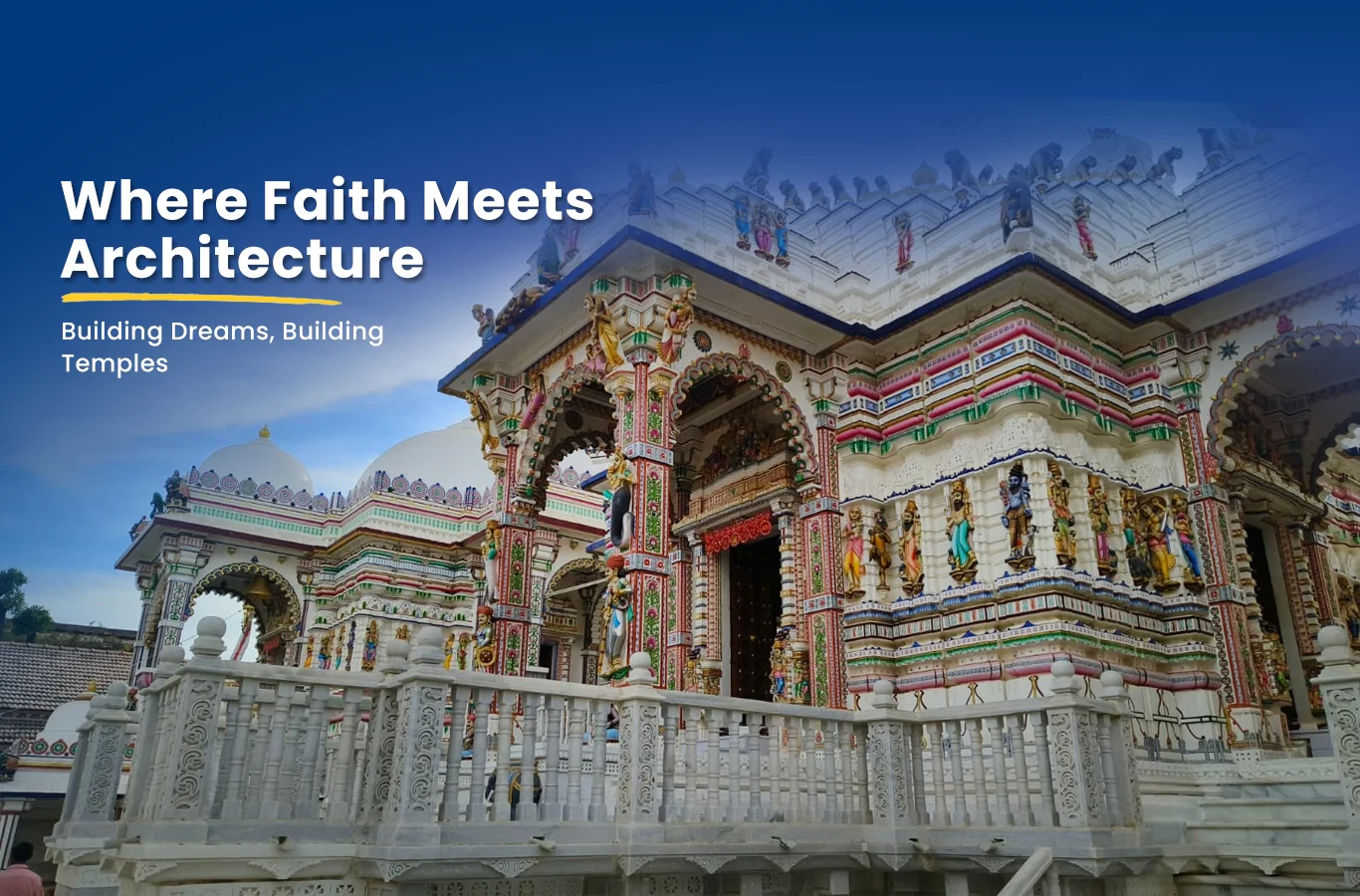India has long been home to a rich heritage of temple architecture, characterized by intricate carvings, sacred geometry, and an unyielding commitment to tradition. Temple architects play a vital role in preserving this legacy, ensuring that every new temple project retains the authenticity of ancient designs while meeting the needs of modern devotees. This article explores the indispensable role of temple architects in India, the unique contributions of Jain Temple Sompura architects, and the growth of temple construction services in Maharashtra.
The Legacy of Temple Architecture in India
India’s temple architecture is an embodiment of its spiritual essence and artistic excellence. From the towering spires of North Indian Nagara temples to the sprawling courtyards of South Indian Dravidian temples, each style reflects deep cultural and regional diversity. Preserving these designs requires specialized knowledge of traditional techniques, materials, and spiritual symbolism.
Temple architects in India are not just builders but custodians of this sacred heritage. They incorporate principles from ancient texts like the Shilpa Shastra and Vastu Shastra, which dictate proportions, alignment, and ornamentation. This ensures that each temple is not merely a structure but a sanctified space for worship and meditation.
Jain Temple Architecture: A Testament to Precision and Devotion
Contributions of Jain Temple Sompura Architects
Among the most celebrated temple architects in India are the Sompura architects, a lineage of master craftsmen renowned for their expertise in Jain temple architecture. Their work is a harmonious blend of simplicity and intricacy, reflecting Jain values of non-violence, purity, and spirituality.
Sompura architects are deeply involved in every stage of temple construction, from conceptualizing layouts to carving intricate motifs. Their designs often feature symmetrical domes, ornate mandapas (assembly halls), and elaborately carved pillars. Examples of their craftsmanship can be seen in iconic Jain temples like the Ranakpur Temple in Rajasthan and the Palitana Temples in Gujarat.
By adhering to centuries-old techniques, Jain Temple Sompura architects ensure that their creations continue to inspire awe and reverence. Their commitment to detail preserves the artistic and spiritual integrity of Jain temples, even as modern technology plays an increasing role in construction.
The Rise of Temple Construction Services in Maharashtra
Maharashtra, home to ancient cave temples and grand sanctuaries, has witnessed a significant rise in temple construction services. This growth is driven by an increasing demand for temples that balance traditional aesthetics with modern functionality.
Blending Tradition with Modern Techniques
Temple Construction Service in Maharashtra are adept at integrating traditional designs with contemporary technologies. While laser-cutting and 3D modeling tools aid precision, the essence of temple architecture remains rooted in classical principles.
Architects and craftsmen in Maharashtra focus on creating temples that honor local traditions, such as the distinct Hemadpanti style. This style, characterized by its simplicity and use of black stone, stands in contrast to the elaborate carvings of Jain temples.
Customization and Client Involvement
One of the key features of temple construction services today is their focus on customization. Clients, whether individuals or religious organizations, are often involved in the planning process. Architects ensure that the final design reflects the community’s spiritual aspirations while adhering to traditional guidelines.
The Challenges of Preserving Traditional Temple Designs
Balancing Heritage and Modernity
One of the greatest challenges faced by temple architects in India is balancing the preservation of traditional designs with the needs of contemporary society. While devotees demand larger spaces, accessibility features, and modern amenities, architects must ensure that these additions do not compromise the sanctity or authenticity of the temple.
Environmental Concerns
Another critical challenge is the sourcing of traditional materials like sandstone, marble, and teakwood. Architects are increasingly exploring sustainable alternatives to minimize environmental impact while maintaining the structural integrity and aesthetic appeal of temples.
How Temple Architects Safeguard Cultural Heritage
Adherence to Ancient Texts
Temple architects rely on ancient architectural treatises like the Shilpa Shastra and Vastu Shastra to guide their work. These texts outline everything from proportions and measurements to the ideal placement of deities and sacred symbols.
Apprenticeship and Knowledge Transfer
Many temple architects come from families with a long history in the craft, ensuring that traditional knowledge is passed down through generations. Apprenticeship programs also play a crucial role in training the next generation of temple architects, ensuring the continuity of this sacred art form.
Collaboration with Artisans
Temple construction is a collaborative effort that involves sculptors, painters, and other artisans. Temple architects coordinate with these specialists to ensure that every detail, from carvings to frescoes, aligns with the overall design philosophy.
The Future of Temple Architecture
While the role of Temple Architect in India remains rooted in tradition, the future of temple design is evolving. Digital tools like 3D modeling and virtual reality are becoming integral to the design process, allowing architects to visualize and refine their work with greater precision.
In Maharashtra, temple construction services are increasingly focusing on eco-friendly practices, such as using recycled materials and incorporating energy-efficient features. These innovations ensure that temples remain not only spiritual hubs but also models of sustainable architecture.
Conclusion
Temple architects in India, including the esteemed Jain Temple Sompura architects, are the guardians of an invaluable cultural legacy. Through their expertise, dedication, and adaptability, they ensure that traditional temple designs continue to inspire awe and devotion in the modern world. The rise of temple construction services in Maharashtra further highlights the enduring relevance of this ancient craft. By balancing tradition with innovation, these architects and craftsmen are preserving India’s sacred heritage for generations to come.

